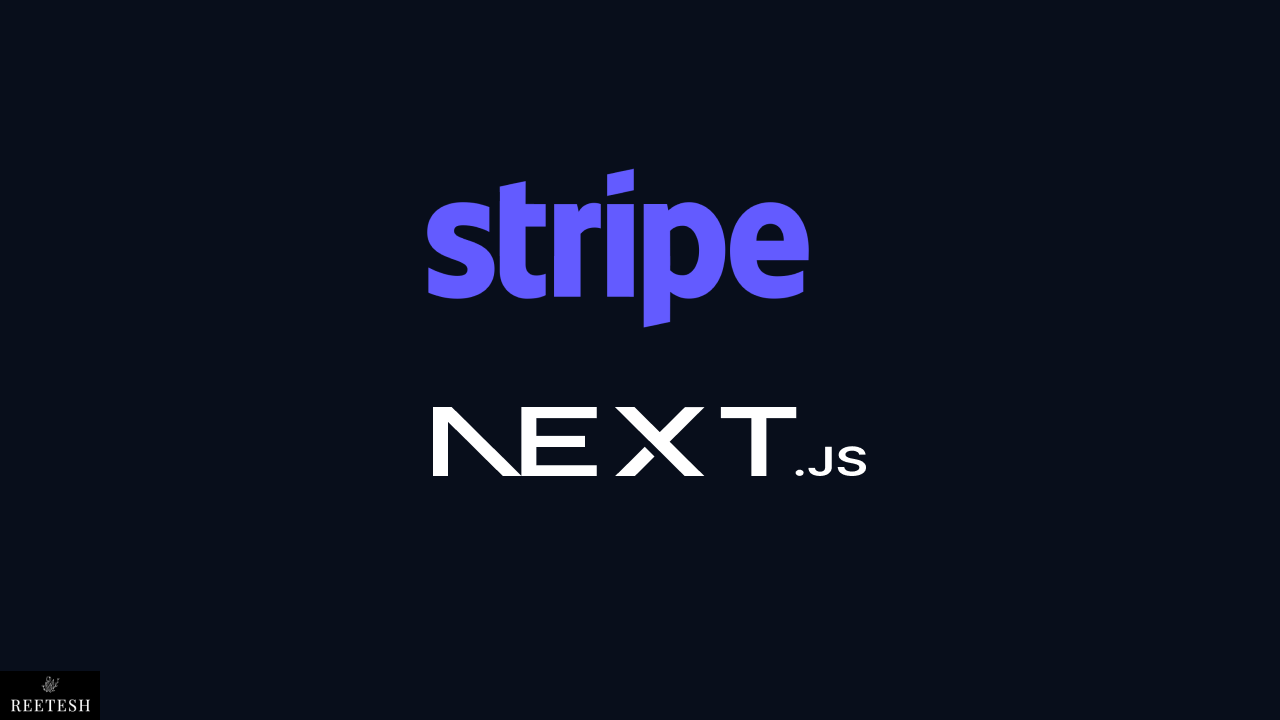Rate Limiter for Next.JS API Routes Explained
Jul 10, 2024
0
Rate limiting is a technique used to control the rate of traffic sent or received by a network. It is used to prevent abuse of the network and to ensure that the network is not overloaded. It's important to implement rate limiting in your applications to prevent abuse and ensure that your services are available to all users.
You encounter rate limiting every day when you use services like Twitter, Facebook, or Google. These services limit the number of requests you can make in a given time period to prevent abuse of their APIs. In this blog, we will see how to implement rate limiting for Next.JS API routes.
How Rate Limiter Works#
Rate limiting works by tracking the number of requests made by a client in a given time period. If the client exceeds the allowed number of requests, the server responds with an error message or a status code indicating that the client has exceeded the rate limit. The client can then retry the request after a certain amount of time has passed.
There are several ways to implement rate limiting, such as:
Token Bucket Algorithm: In this algorithm, a token bucket is used to track the number of requests made by a client. The client is allowed to make a request only if there are tokens available in the bucket. The bucket is refilled at a constant rate, and tokens are added to the bucket at a fixed interval.
Leaky Bucket Algorithm: In this algorithm, a leaky bucket is used to track the number of requests made by a client. The bucket has a fixed capacity, and requests are added to the bucket at a fixed rate. If the bucket overflows, the requests are dropped.
Sliding Window Algorithm: In this algorithm, a sliding window is used to track the number of requests made by a client. The window has a fixed size, and requests are added to the window at a fixed rate. If the window is full, the requests are dropped.
Token Bucket Algorithm Implementation#
The token bucket algorithm is a simple and effective way to implement rate limiting in your applications. We can implement it globally for all api or for specific api routes or user based.
I assume your next.JS app is ready with latest version(14.2.4) as of writing this blog. I'm using nextTick.JS with App Router.
Lets implement rate limiter for globally where we can limit the requests for all users and all api routes.
import { NextRequest } from 'next/server';
// can store in redis or memcached
let bucketSize = 10;
let tokens = bucketSize;
let lastRefill = Date.now();
const refillRate = 1000;
const refillTokens = () => {
const now = Date.now();
const timeElapsed = now - lastRefill;
const tokensToAdd = Math.floor(timeElapsed / refillRate);
if (tokensToAdd > 0) {
tokens = Math.min(bucketSize, tokens + tokensToAdd);
lastRefill = now;
}
};
export async function GET(req: NextRequest) {
refillTokens();
if (tokens > 0) {
tokens -= 1;
return Response.json(tokens, { status: 200 });
}
return Response.json({ message: 'Rate limit exceeded!' }, { status: 429 });
}Here above code is quite simple to understand we have two function refillTokens and GET function. refillTokens function is used to refill the tokens in the bucket and GET function route handlers which we use to create API routes in next.JS.
In GET function we are checking if tokens are available in the bucket then we are decrementing the tokens and returning the response with status code 200. If tokens are not available then we are returning the response with status code 429.
use Hook in React and its use cases
React new use api can be called within loops and conditional statements like if. Like other React Hooks, the function that calls use must be a Component or Hook.
Read Full Post
Rate Limiter based on User#
Now what if you want to implement rate limiter based on USER using same token bucket algorithm. Lets see how we can do that.
import { NextRequest } from 'next/server';
// can store in redis or memcached
const bucketSize = 10;
const refillRate = 1000;
const userBuckets = {};
const refillTokens = (userId: any) => {
const now = Date.now();
const bucket = userBuckets[userId];
const timeElapsed = now - bucket.lastRefill;
const tokensToAdd = Math.floor(timeElapsed / refillRate);
if (tokensToAdd > 0) {
bucket.tokens = Math.min(bucketSize, bucket.tokens + tokensToAdd);
bucket.lastRefill = now;
}
};
export async function GET(req: NextRequest) {
// it should be authenticated user id
const userId = req.nextUrl.searchParams.get('userId');
if (!userBuckets[userId]) {
userBuckets[userId] = { tokens: bucketSize, lastRefill: Date.now() };
}
refillTokens(userId);
const bucket = userBuckets[userId];
if (bucket.tokens > 0) {
bucket.tokens -= 1;
return Response.json({ tokens: bucket.tokens },{ status: 200,});
}
return Response.json({ message: 'Rate limit exceeded!' }, { status: 429,});
}The code is same as before but now we are maintaining the user based bucket in userBuckets object. We are checking if user is present in the userBuckets object then we are decrementing the tokens from the bucket. If user is not present then we are creating the bucket for the user and adding the tokens to the bucket.
Now obviously in real world apps you will be using real authentication mechanism to get the user id and then you can use that user id to implement rate limiter based on user. Also here we are storing data in memory which is not recommended for production apps. You can use Redis or Memcached to store the data.
Window Sliding Algorithm Implementation#
The sliding window algorithm is another way to implement rate limiting in your applications. In this algorithm, we maintain a window of fixed size and track the number of requests made by a client in that window. If the window is full, the requests are dropped.
import { NextRequest } from 'next/server';
// can store in redis or memcached
const windowSize = 60000;
const maxRequests = 10;
const userRequests = {};
const cleanupOldRequests = (timestamps) => {
const now = Date.now();
return timestamps.filter((timestamp) => now - timestamp < windowSize);
};
export async function GET(req: NextRequest) {
const userId = req.nextUrl.searchParams.get("userId");
if (!userRequests[userId]) {
userRequests[userId] = [];
}
userRequests[userId] = cleanupOldRequests(userRequests[userId]);
if (userRequests[userId].length >= maxRequests) {
return Response.json({ message: "Rate limit exceeded!" }, { status: 429 });
}
userRequests[userId].push(Date.now());
return Response.json({ message: "Request successful!" }, { status: 200,});
}In the above code, we are maintaining a window of size 1 minute and allowing a maximum of 10 requests per window. We are storing the request timestamps in the userRequests object and cleaning up old requests before checking the rate limit.
The sliding window algorithm is useful when you want to limit the number of requests made by a client in a fixed time window. You can adjust the window size and the maximum number of requests per window based on your requirements.
Rate Limiter based on IP Address#
Up until now we are using either rate limiter globally or USER based. but what if you want to rate limit based on IP address. The concept is same as USER based rate limiter but instead of userId we will use IP address as key.
import { NextRequest } from 'next/server';
import { headers } from "next/headers";
// can store in redis or memcached
const windowSize = 60000;
const maxRequests = 10;
const ipRequests = {};
const cleanupOldRequests = (timestamps) => {
const now = Date.now();
return timestamps.filter((timestamp) => now - timestamp < windowSize);
};
const getIP=() =>{
// depending on deployment environment you can use different headers.
// it can be different as well.
const forwardedFor = headers().get("x-forwarded-for");
const realIp = headers().get("x-real-ip");
if (forwardedFor) return forwardedFor.split(",")[0].trim();
if (realIp) return realIp.trim();
return null;
}
export async function GET(req: NextRequest) {
const ip = getIP();
if (!ipRequests[ip]) {
ipRequests[ip] = [];
}
ipRequests[ip] = cleanupOldRequests(ipRequests[ip]);
if (ipRequests[ip].length >= maxRequests) {
return Response.json({ message: "Rate limit exceeded!" }, { status: 429 });
}
ipRequests[ip].push(Date.now());
return Response.json({ message: "Request successful!" }, { status: 200,});
}In the above code, we are using getIP function to get the IP address of the client. We are storing the request timestamps in the ipRequests object and cleaning up old requests before checking the rate limit.
⚙️ Rate Limiter Example
1 minute window with 10 requests allowed. Click the button to test the rate limiter.
(Testing with client side only, not a real rate limiter. But code is same for server side too expect the state management.)
You can do more aggressive rate limiting based on IP address by using
middleware.ts in next.JS. middleware.ts awlays run before the route
handlers. You can use middleware.ts to check the rate limit and block the
request before it reaches the route handlers.
You can use @upstash/ratelimit to implement rate limiter for your next.JS application. @upstash/ratelimit is a simple and efficient rate limiter that you can use to protect your application from abuse.
/// middleware.ts
import { Ratelimit } from '@upstash/ratelimit';
import { Redis } from '@upstash/redis';
const ratelimit = new Ratelimit({
redis: Redis.fromEnv(),
limiter: Ratelimit.slidingWindow(10, '50 s'),
});
export default async function middleware(req) {
const { success } = await ratelimit.limit(req.ip);
return success
? NextResponse.next()
: NextResponse.redirect(new URL('/rate-limit-exceeded'), request.url);
}Conclusion#
Rate limiting API Routes are important to safeguard your application from abuse and implmenting it in efficient way is crucial. There are multiple things to consider while implementing rate limiter like Token Bucket Algorithm, Leaky Bucket Algorithm, Sliding Window Algorithm etc. You can choose the one which suits your application requirements.
Recently I got attacked on my this site for Comment section where a person was posting spam comments. I had to implement rate limiter to prevent the spam comments. I used Sliding Window Algorithm to limit the number of comments a user can post in a certain time window. I used @vercel/kv to store the data in KV store.
I hope this blog helps you to understand how to implement rate limiting for Next.JS API routes. If you have any questions or feedback, feel free to leave a comment below. Happy coding! 🚀





Comments (2)